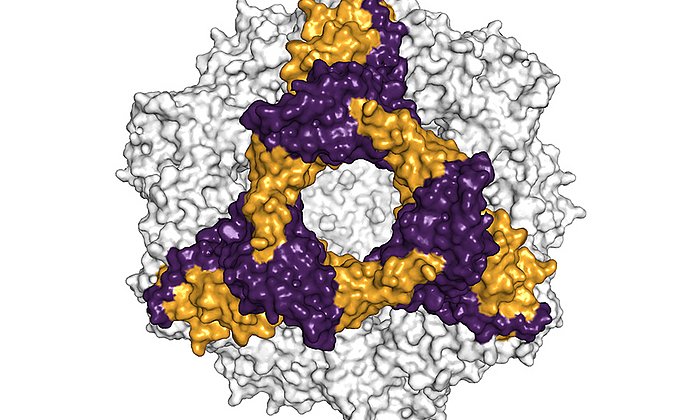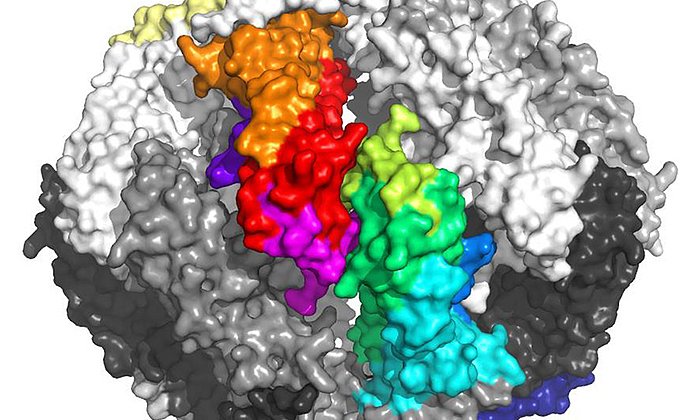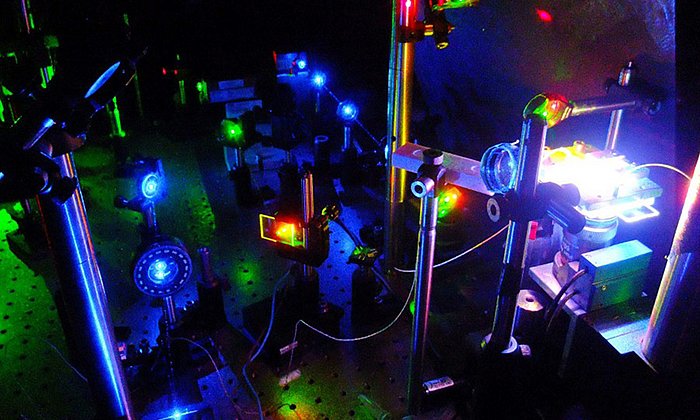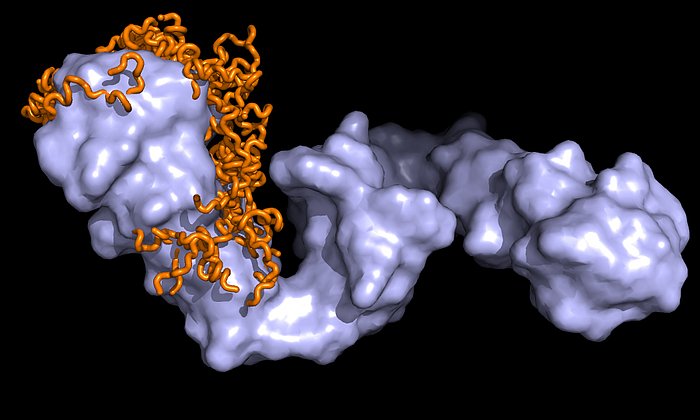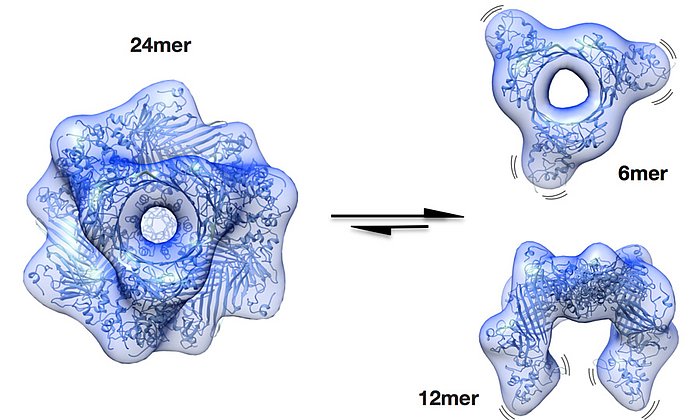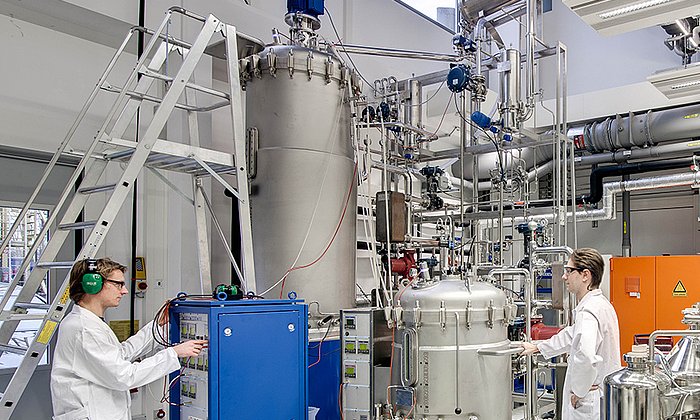TUM defines a new dimension for biomedical research
World-class nuclear magnetic resonance center
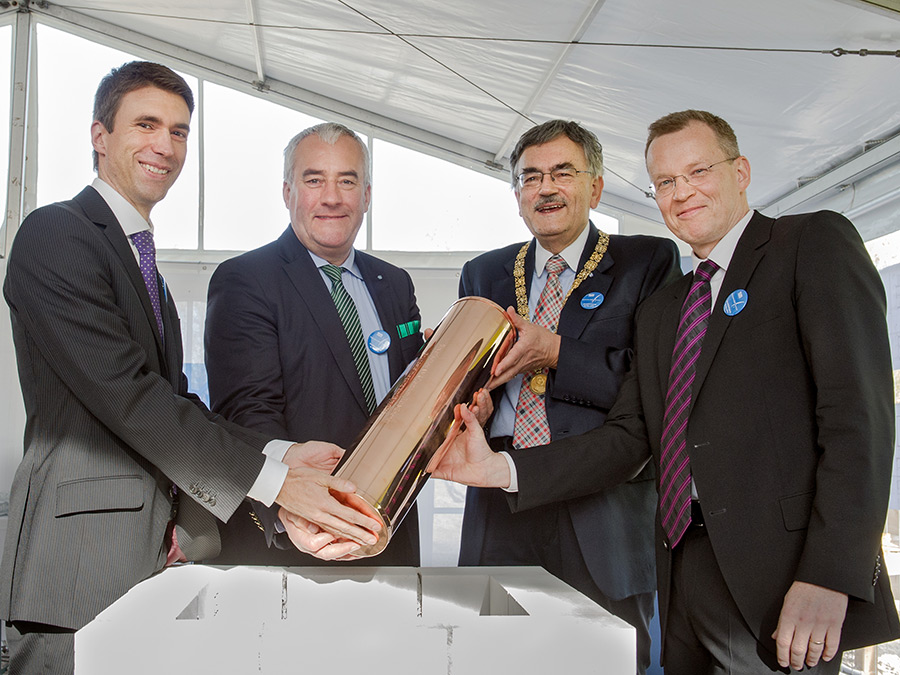
The nuclear magnetic resonance (NMR) spectrometer is without equal in its power and will foray into a new dimension in biomedical research: It will allow the precise measurement of the spatial structure of protein complexes and can even record their dynamics.
These biosystems play a decisive role in the formation of cancer and in the mechanisms of neurodegenerative diseases. Very large protein aggregates are responsible for Alzheimer’s disease. In the future it will be possible to investigate them under near physiological conditions.
The expected insight into the dynamics of disease-relevant protein systems will open the door to new fields of application in health research, biotechnology and the pharmaceutical industry. These include the development of optimized active agents in new medications that are safer and individually more effective and tolerable for patients – the “personalized medicine.”
Alliances with international reach
The Bavarian NMR Center was founded by the TUM in 2001 to make available to the growing research community its eleven high field spectrometers in the frequency range of 400 to 950 MHz.
This fulfilled a key prerequisite for internationally recognized research associations, such as the Cluster of Excellence “Center for Integrated Protein Research Munich” (CIPSM) and the TUM alliance with the Helmholtz Center Munich. The latter is contributing 3.5 million euro to the procurement of the 1.2 GHz spectrometer. Cooperation partners include the respective Max Planck Institutes.
The NMR Center is directed by Prof. Sattler, who was appointed jointly by the TUM and the Munich Helmholtz Center. The executive committee will include the TUM professors Kessler, Reif and Glaser (Department of Chemistry).
Investment on solid footing
“The Bavarian NMR Center, for which we are laying the cornerstone today, will link the life science research at the Departments of Chemistry, Physics and Medicine, as well as the School of Life Sciences in Weihenstephan with the work of the Helmholtz Center in Munich in a truly unique manner. For me, this research facility, jointly funded by the Free State of Bavaria and the German Federal Government, documents the convincing research strategy of the Technical University of Munich and will further strengthen the international excellence of the TU Munich,” says Science Minister Spaenle.
“Great hopes rest on science in the battle against widespread diseases. That researchers at the NMR Center will soon have insight into biomedical contexts using cutting-edge technology that was barely imaginable only a few years ago and that might enable new therapeutic approaches represents a milestone and a great opportunity,” says Stefan Müller, parliamentary state secretary in the Germany Ministry of Education and Research. “Since 2007, the federal and state governments together have provided funding to the tune of 5.4 billion euro for new research facilities and large-scale equipment. The Technical University of Munich is the frontrunner in Germany with 256 million euro. This casts a clear light on the excellent work being done here. After all, whoever aspires to success must provide excellence.”
“The Science Council has approved the new research building with the 1.2 gigahertz spectrometer because the fortunate calling of Professor Horst Kessler in 1988 led to a luminary coming to the TUM, who consistently performed at the highest scientific level in biological and medical chemistry,” says TUM President Wolfgang A. Hermann. “He laid the foundations for our international reputation in this future-oriented field of research, which is why, today, I would like to express my deep gratitude above all to him. He contributed significantly to the successful calling of all further chairs at the highest level in line with the motto: Excellence attracts excellence.”
NMR Center integrates into an overall concept
The TUM will take the next significant step with the construction of a new research building for the TUM Center for Functional Protein Assemblies. The construction costs of 40 million euro will also be shared equally between the federal and state governments. The planning phase is well underway with construction slated to commence in 2016 and completion in 2018. The functionality and principles of proteins will be researched in an interdepartmental manner in the new center, which will benefit from the unique configuration of NMR facilities in Garching.
“To this end, our excellently positioned research community of biophysics, with two Leibnitz prizewinners, biochemistry and medicine provide the ideal conditions. Our overall concept is rounded off with the tumor research center TranslaTUM, currently under construction at the medical campus of our clinic, and the future multiple sclerosis center of the Tschira Foundation,” said President Hermann in Garching on Monday.
Technical University of Munich
Corporate Communications Center
- Dr. Andreas Battenberg
- battenberg@zv.tum.de
- presse@tum.de
- Teamwebsite
